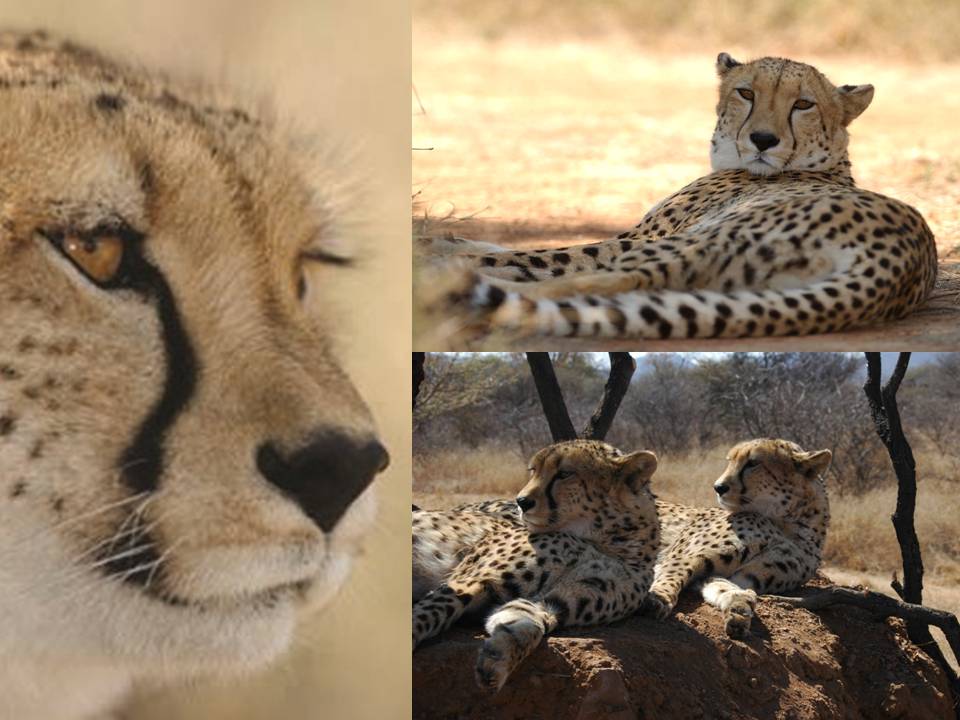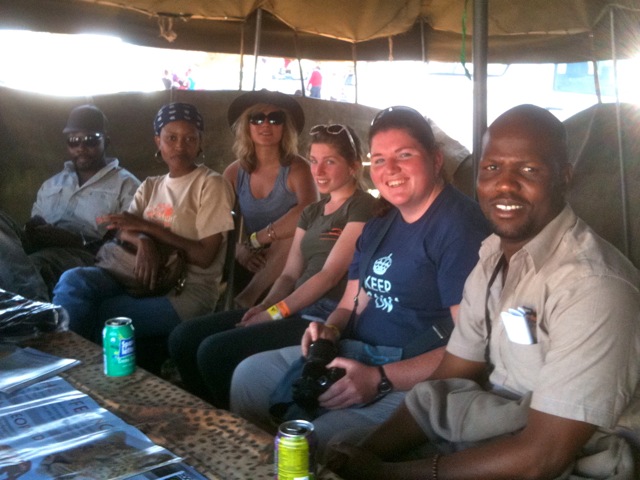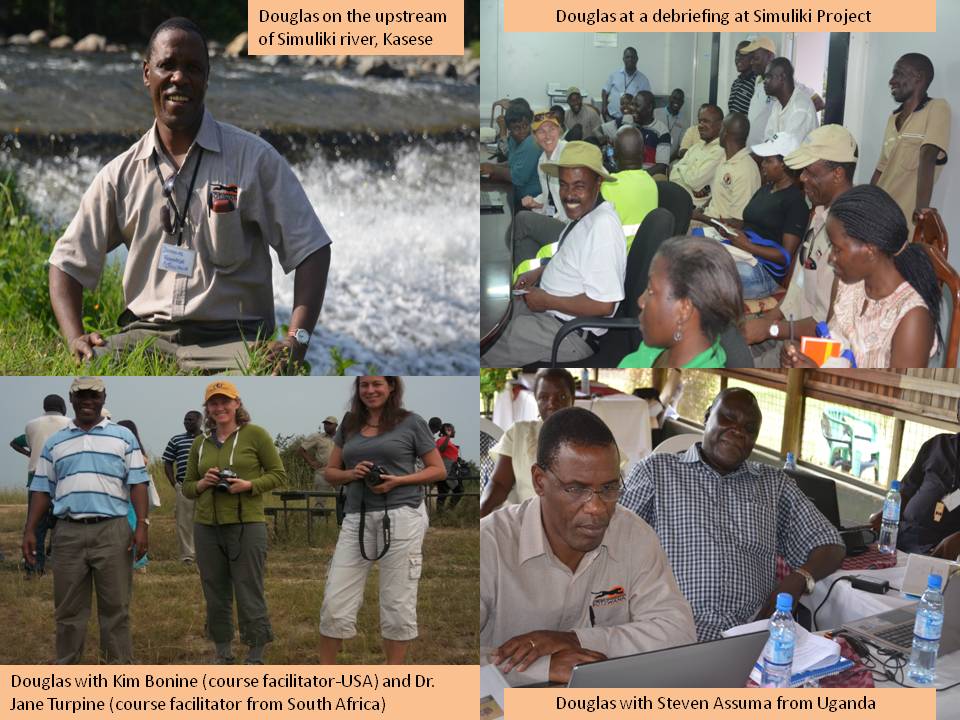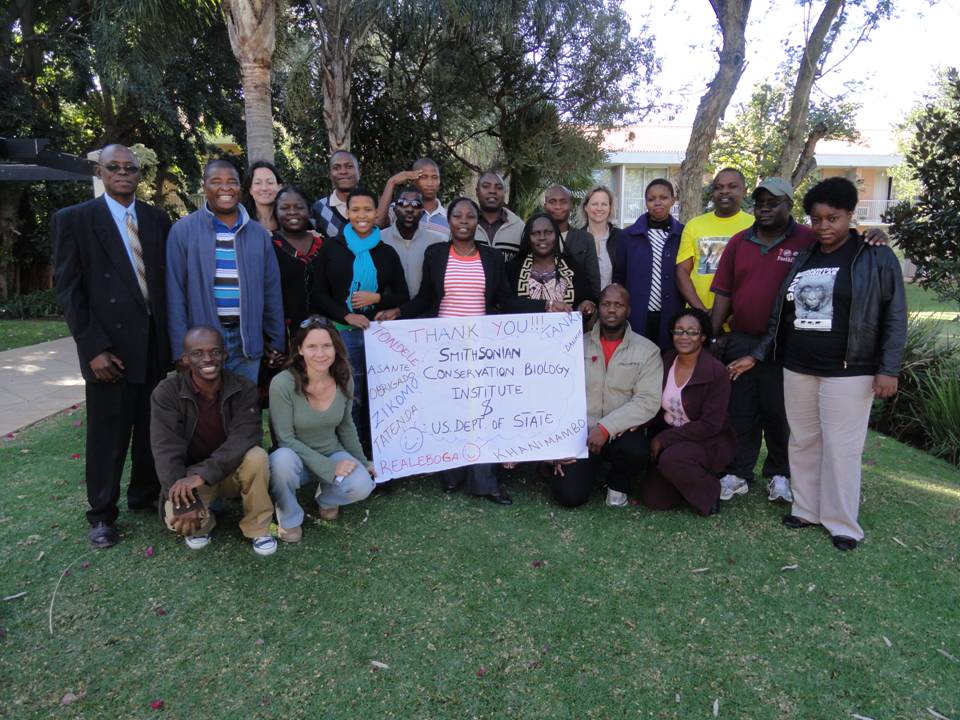|
It is with much sadness we report that Letotse, our remaining ambassador cheetah passed away on the 9th June 2012. 16 years ago, Mokolodi Nature Reserve took on two male cheetah cubs, Duma and Letotse, whose mother had been killed due to livestock conflict. They quickly became an important part of Mokolodi and wonderful ambassadors of their species. Duma and Letotse were originally part of the reason for starting up CCB and through their presence at Mokolodi they offered tens of thousands of people the opportunity of getting close to a cheetah. They played a pivotal role in educating people about cheetah and predators in general. They will be sincerely missed! Due to old age, in September last year Duma died as a result of renal failure. Earlier this month, Letotse, his brother also died from renal failure brought on by his advanced years. In a country where livestock farming is so prevalent, helping people understand the role of predators in the wild is of paramount importance and we will always be grateful to Duma and Letotse for helping to raise awareness for this threatened species in Botswana. Of course, their spirits will live on through the work of Cheetah Conservation Botswana!
0 Comments
The end of June saw an unseasonably warm but windy start to one of Botswana's largest agricultural events - The Ghanzi Agricultural Show. CCB attended all three days with a stall showcasing our education and community outreach paraphernalia as well as showcasing our achievements in research this year. Five of CCB's staff and three volunteers assisted with the event which saw many community members and farmers eagerly interacting with us and taking part in our competitions, as well as filling out surveys and cheetah sightings forms. The general response from the show was a very encouraging one,with farmers showing a significantly improved attitude towards predators on farmlands. It seems that farmers are improving ways in which they protect their livestock from predators and henceforth blazing a path towards coexistence of livestock and predators. It would seem that they, Ghanzi farmers are proving that coexistence is possible and that together we can conserve both threatened predators and Botswana's livestock industry simultaneously.
The Conservation Strategy Fund held a course in Economic Tools for Conservation and Infrastructure Planning in the Albertine Rift , from June 11-22, 2012 in Kasese, Uganda. This course was offered in partnership with the National Environment Management Authority (NEMA), Uganda and made possible through the support of the USAID and Wildlife Conservation Network (WCN) and the Handsel Foundation. Participants at the training came from Burundi, Uganda, Rwanda, Kenya, Tanzania the Democratic Republic of Congo, Ethiopia and Botswana. Representatives were drawn from government institutions, NGO’s, CBOs, research institutions, donor agencies, businesses, and other relevant organizations involved in natural resource management, biodiversity conservation, and infrastructure development took part in this training. Most of the officers participating in this training were: Program Officers and Directors, Government Officers, District and Economic Planners, EIA Practitioners, Field Enforcement Officers, Policy and Financial analysts, Scientists/Researchers, and Developers/Engineers who are involved in planning and decisions around energy and infrastructure development. Participants came from a variety of disciplines such as biology, community development, engineering, accounting, business, environmental sciences, forestry, law, anthropology, or economics.
Participants learned to use economics to be more strategic and successful in their planning and development efforts related to infrastructure and the environment. During the comprehensive two-week session, participants learned to use economics to be more strategic and successful in their planning and development efforts related to infrastructure and the environment. Topics covered were economic fundamentals, natural resource economics, environmental valuation methods, environmental policies, communication and negotiation techniques, and hands-on experience with cost-benefit analysis. These skills are crucial at a time when integrating ecosystem conservation and infrastructure development has become an essential component of short- and long-term social and environmental well-being in the Albertine Rift. Participants were exposed to the foundation in basic economic concepts and language, Insight into the drivers of environmental problems and over-extraction of natural resources, formulation of more effective solutions and policies for infrastructure planning and conservation, incorporation of environmental and social costs and benefits into infrastructure development, practice using communication and negotiation techniques to articulate environmental values in a language that communities, businesses, and governments can understand, a network of fellow infrastructure planners and environmental professionals and a membership in CSF’s global alumni network. The Smithsonian Conservation Biology Institute hosted the Human-Wildlife Conflict Collaboration's (HWCC) 'Analyzing and Transforming Conflict to Create Sustainable Solutions for People and Wildlife' training in Gaborone, Botswana from June 4-9th, 2012.The HWCC training was available to professionals working in countries within the Southern African Development Community (SADC)and Max Seele from CCB was successful in receiving a scholarship to attend the course and Rebecca Klein.The HWCC works working with conflict prevention and reconciliation specialists to adapt conflict resolution practices and processes to the field of conservation. The course was a practical training program for conservation professionals, often skilled in the science of wildlife, but less so in the art of the human dimensions of their work, in order to empower them to be more effective in achieving their conservation goals. The course was very useful in engaging participants to play out various conflict situations and thereby gain experience with playing the role of mediator and managing single to multi-stakeholder conflicts. This to then be applied to working with communities on a range of issues, particularly human wildlife conflict.
|
SearchArchives
May 2024
Categories |





 RSS Feed
RSS Feed
